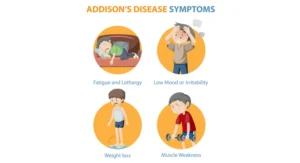Public health and climate change: 7 tips to prepare communities
By TOI Staff
October 14, 2023
Update on : October 14, 2023

The growing climate crisis brings about many challenges. This year alone, the U.S. has faced 23 severe weather incidents, each costing $1 billion or more, surpassing last year’s record of 22 such events.
One sector that climate change has deeply affected is public health. In this article, we will go over some tips to prepare communities for the effect that climate change has on public health.
Community Awareness and Education
People must understand how changing weather patterns are leading to an increase in the incidence of natural disasters, which in turn pose a threat to their health. Regular educational sessions can help in building a culture of readiness among citizens. These sessions can cover the basics of climate change, its impact on health, and why preparing for it is crucial.
Offering this knowledge in a simple, accessible manner through local gatherings, workshops, or town hall meetings can ensure everyone understands the message. Local media can also play a significant role in spreading the word. Why is this important? Because a well-informed community is better positioned to take collective action.
From glacial floods and landslides to cyclones, climate change is making extreme weather events more frequent and severe. With these harsh weather patterns, the need for public health professionals is also increasing.
Did you know that you, too, can join this field and play your part? Today, you can pursue an online master in disaster management from reputable institutions from the comfort of your home. This degree can educate you on everything you need to know to deal with the effects of the changing climate and pursue a career in this growing field.
Health Surveillance and Monitoring
Health surveillance and monitoring are key to staying one step ahead of climate-related health issues, especially when natural disasters strike. A solid surveillance system tracks climate-sensitive diseases and conditions, offering early warnings that are essential for prompt action. When a community is well-informed about potential health threats, it’s better prepared to tackle them head-on.
Timely interventions, guided by accurate and up-to-date data, can prevent outbreaks and health emergencies, making a significant difference in how a community navigates through the challenges posed by natural disasters. This approach not only safeguards public health but also fosters a sense of security and readiness among community members.
Climate-resistant Healthcare Infrastructure
When a storm, flood, or heatwave strikes, the community turns to healthcare facilities for help. Hence, hospitals and other facilities must remain operational during such challenging times. To achieve this, we need to reinforce the structures of existing healthcare facilities to make them sturdy enough to withstand severe weather conditions.
Moreover, having backup power systems in place ensures that critical life-saving equipment remains operational even when the power goes out. Ensuring an adequate supply of clean water and proper sanitation facilities within healthcare settings is also critical to prevent the spread of diseases following a natural disaster.
By focusing on these aspects, we not only make our healthcare facilities more resilient to climate change but also ensure the well-being and safety of the community during times of natural disasters.
Vector Control Programs
Vector Control Programs are essential as climate change, through natural disasters like floods, creates favorable conditions for harmful insects like mosquitoes to thrive. When these insect populations grow unchecked, the risk of diseases such as malaria and dengue, which they carry, significantly increases.
To combat this, communities need to adopt effective vector control programs. These programs aim to keep the insect populations at bay, minimizing the chances of disease spread. A crucial part of these programs is monitoring, where specialists keep a close eye on insect populations and the diseases they might carry. They then use this information to decide where and when to take action, like spraying insecticides or removing standing water where mosquitoes breed.
Through these carefully planned actions, the program helps to cut down the risk of disease outbreaks, keeping the community healthier even when facing the challenges of climate change and natural disasters.
Water and Sanitation Management
Water and sanitation management form a critical defense line against the health issues that often follow natural disasters. When storms or floods hit, they can easily contaminate water sources and cripple sanitation systems.
As a result, communities face an increased risk of water-borne diseases, which can quickly spread under such conditions. It’s essential to improve water and sanitation infrastructure to withstand the impacts of extreme weather. This involves upgrading existing facilities and building new ones that adhere to resilient design principles.
Furthermore, regular maintenance is crucial to ensure that these systems function effectively when they are needed the most. Engaging the community in these efforts, educating them on safe water practices, and promoting hygiene are additional steps that can significantly mitigate risks.
Nutrition and Food Security
Climate change poses a serious threat to our food systems, which in turn can lead to malnutrition. The solution lies within our communities, where we can foster a sense of responsibility and action towards better food security and nutrition. Encouraging local agriculture not only supports the local economy but also provides a reliable source of fresh, nutritious food.
Community gardens are a great way to involve individuals in producing their own food, teaching them valuable skills, and promoting a culture of self-sufficiency. Education plays a crucial role here as well. By educating the community about the importance of nutrition and the effects of climate change on food production, we empower individuals to make informed decisions.
These collective efforts contribute to building a community that is not only aware of the challenges posed by climate change but is also actively working towards ensuring food security and better nutrition for all.
Mental Health Support
Experiencing or even just witnessing disasters can lead to anxiety, depression, or post-traumatic stress disorder. Hence, it’s crucial to have accessible mental health services in place. Communities should establish and maintain local mental health facilities equipped to offer support in the aftermath of natural disasters. Furthermore, creating community support networks where people can share their experiences and coping strategies is beneficial.
Offering educational resources about the psychological impacts of disasters and how to seek help is also important. Such proactive measures ensure that individuals have the necessary support to navigate through the emotional challenges posed by climate-related disasters.
Conclusion
The tips above can help prepare communities to tackle the health challenges posed by climate change. Through education, infrastructure improvements, and collaboration, we can significantly enhance our readiness. Engaging in disaster management education and implementing these practical steps can lead to safer, healthier communities amidst the ongoing climate crisis.
Read more: Public health and climate change: 7 tips to prepare communities















